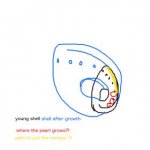parfaitelumiere
Member
- Joined
- Dec 28, 2017
- Messages
- 171
Hello,
I have read for culture process, the shell has a nucleus implant, and a mantle piece is added, mantle coming from another shell, with nice pearl.
And the mantle implant becomes pearl sack, to produce pearl all around nucleus.
So if I read correctly, it mans the sack is living organism, comming from another shell, and living inside host shell right, like a graft.
I also have read for abalone it's not possible to operate becuse the animal would bleed to death.
So it means no way to make a standart round pearl using graft like in oysters.
However here are several questions, if I cut a piece of abalone mantle to put in abalone host without hurting it, the host won't die, but the mantle would bleed to death?or became a sack?
As the mantle is a part of abalone, I would think it to bleed to death injuring the host by the way.
If I do a blister process on a abalone without hurting it, there is a way to make cultured pearls from abalone, just needing care not to hurt animal?
Is there any written document about abalone culture pearl attempts?
Or maybe someone here has some informations?
I have read for culture process, the shell has a nucleus implant, and a mantle piece is added, mantle coming from another shell, with nice pearl.
And the mantle implant becomes pearl sack, to produce pearl all around nucleus.
So if I read correctly, it mans the sack is living organism, comming from another shell, and living inside host shell right, like a graft.
I also have read for abalone it's not possible to operate becuse the animal would bleed to death.
So it means no way to make a standart round pearl using graft like in oysters.
However here are several questions, if I cut a piece of abalone mantle to put in abalone host without hurting it, the host won't die, but the mantle would bleed to death?or became a sack?
As the mantle is a part of abalone, I would think it to bleed to death injuring the host by the way.
If I do a blister process on a abalone without hurting it, there is a way to make cultured pearls from abalone, just needing care not to hurt animal?
Is there any written document about abalone culture pearl attempts?
Or maybe someone here has some informations?

